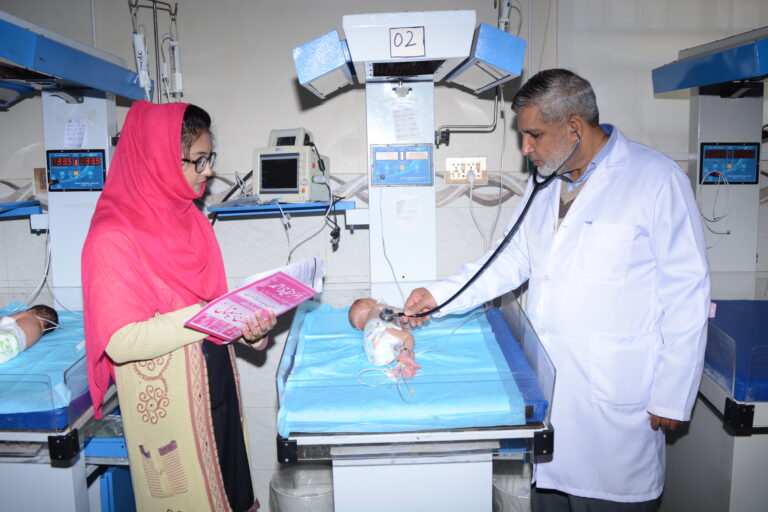What Are the Health Problems for Off-Spring of Mothers with Pre-eclampsia?
Patient Presentation
An intern was taking care of a newborn female in the newborn nursery. The mother was 19 years old, first pregnancy who was induced at 37 weeks for preeclampsia. The baby was symmetrically small for all growth parameters (all at 10%) with a weight of 2736 grams, length of 46 cm, and head circumference of 33 cm. The baby had needed interventions for low glucoses and was having slow feeding and needed supplementation.
The diagnosis of a term, small for gestational age infant was made who was having problems due to symmetrical growth retardation. The attending asked the intern what he knew about problems with pre-eclampsia. He talked about all the maternal problems such as severe complications with eclampsia and HELLP syndrome. “You are going to take care of a lot of these kinds of babies. What do you know about the potential problems for the baby?” she asked. He said he wasn’t really sure. “I bring it up because you are seeing some of them. The placenta doesn’t work very well causing problems for mom and baby. The baby doesn’t grow very well so that causes a host of problems including abnormal glucoses. In my experience, small babies don’t feed as well. Premature babies certainly don’t feed as well and often the babies are born premature because of the mother’s health. The babies can have long term health problems like high blood pressure and other problems but I’d have to review those to tell you exactly what they all are. You’ll be seeing a lot of adolescent mom’s in the future too. What kinds of problems happen in teen pregnancies?” she continued.
Discussion
“Pre-eclampsia is a complex multisystem disease, diagnosed by sudden-onset hypertension (> 20 weeks of gestation) and at least one other associated complication, including proteinuria, maternal organ dysfunction or uteroplacental dysfunction…[It] is one of the most severe complications of pregnancy and a leading causes of maternal and perinatal morbidity and mortality.” Deaths per year world wide are estimated to be 500,000 babies and > 70,000 women. Women that survive have decreased life-expectancy and it is estimated that > 300 million women and children are at “…increased risk of chronic health problems due to previous exposure to pre-eclampsia.” Estimate are between 1 – 5.6% of pregnancies have pre-eclampsia. Pre-eclampsia classification is based on symptoms. Eclampsia is a severe complication of pre-eclampsia that has new onset seizures. HELLP syndrome is another severe complication that also has hemolysis, elevated liver enzymes and low platelet counts. The cause is felt to be placental dysfunction releasing factors into the maternal circulation. The only cure for pre-eclampsia and other severe complications is infant delivery. Patients without severe complications and whose blood pressures are still elevated but lower are also managed with anti-hypertensive medication and close monitoring for worsening signs and laboratory testing. Preventative treatments are being evaluated too including lipid and glucose medications.
“Adolescent pregnancy has a higher risk of obstetrical and neonatal complications than adults…[These include] preeclampsia, premature rupture of membranes, anemia, sexually transmitted diseases and maternal deaths.” Newborns have “…higher risk of prematurity, stillbirths, low birth weight, lower Apgar scores and congenital anomalies.” A review can be found here.
Learning Point
As preeclampsia appears to be a problem with placental regulation it is not surprising that one of the main short term problems is in-utero fetal growth restriction and its own complications including perinatal death. A review of problems in small for gestational age infants can be found here. Also because treatment for the mother is delivery of the infant, these newborns are also often born premature with its own attendent complications as well such as intraventricular hemorrhage, respiratory distress syndrome or necrotizing enterocolitis.
Long term, infants have higher risks of hypertension, stroke and increased body mass index.
Infants exposed to severe pre-eclampsia have a higher risk of cognitive and neurodevelopmental disabilities.
Data is limited or conflicting and potentially there is a higher risk of:
- Coronary artery disease
- Glucose metabolism problems
- Inflammatory disease problems
- Asthma
- Mental health



